Travels
Greece: Best Places to Visit & Essential Travel Tips
Greece is a country with a rich history, stunning natural beauty, and a vibrant culture. From ancient ruins to idyllic islands, there are countless places to explore in Greece. However, planning a trip to Greece can be overwhelming, especially for first-time visitors.
Discover the rich history, natural beauty, and vibrant culture of Greece. This article highlights the best places to visit and provides essential travel tips for a memorable trip.
Facts About Greece
Geography
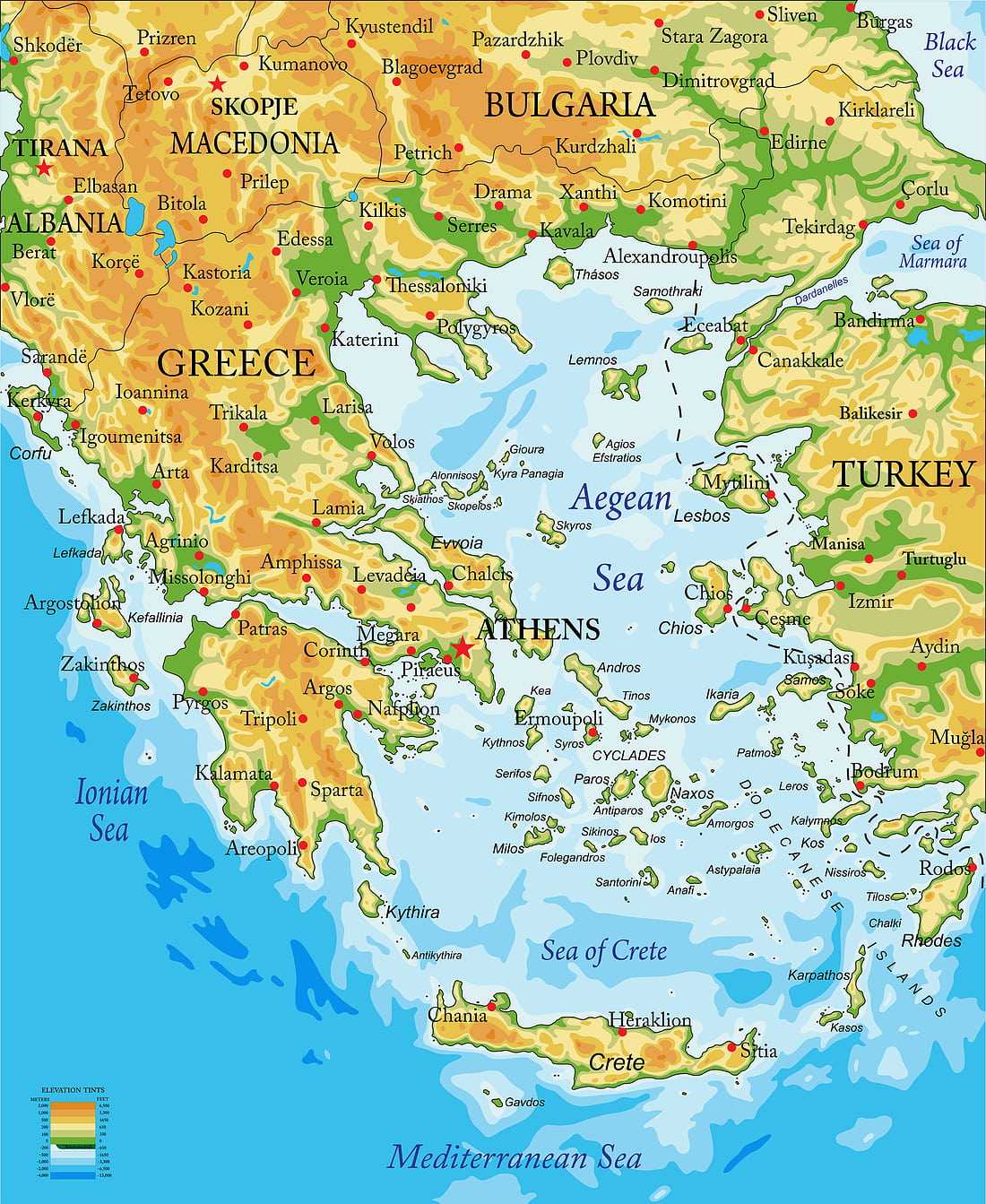
Greece is a picturesque country located at the southernmost point of the Balkan Peninsula, enchanting with stunning landscapes and rich history. Its territory is home to some 2,000 islands, of which some 170 are inhabited, offering endless opportunities for exploration and adventure.
Athens, the cultural and intellectual capital of Greece, is a city steeped in history, with magnificent ancient ruins that serve as testimony to the country's rich past.
Thanks to its enviable location, Greece is surrounded by as many as three seas: the Aegean Sea to the east, the Mediterranean Sea to the south and the Ionian Sea to the west. In addition, it borders Albania, the Republic of North Macedonia, Bulgaria and Turkey, but only to the north and northeast.
The sea, mountains and lowlands are the three dominant elements of Greece's varied topography. The country's Mediterranean climate is characterized by warm and dry summers, mild and wet winters and occasional temperature fluctuations.
Population
Greece has a population of about 10.5 million. The basic belief system of the Greek state is that all people of Greek descent are or should be Greek. According to the official position of the Greek government, there are no ethnic or national minorities in the country, and the vast majority of the population identifies itself as Greek. However, regardless of the official government position, there are groups among the Greek population that identify themselves as Turks, Macedonians, Albanians, Aromanians and Roma (commonly known as Gypsies).
Despite the long Ottoman occupation of Greece, the majority of the population still belongs to the Greek Orthodox Church. The only officially recognized minority in Greece is a religious minority, namely the Muslim minority living in the Thráki region, most of whom are of Turkish origin.
Language
Greek is one of the oldest documented Indo-European languages. The official language of the country is Standard Modern Greek, which is a synthesis of two ancient forms: Demotic, which is widely used in speech, and Katarevus, a deliberately archaizing form that was mostly written, appearing in official government documents and newspapers until the mid-1970s.
Best Time to Visit Greece

The peak tourist season in Greece is from mid-June to early September, when the weather is warm and sunny and the beaches and islands are the most crowded. This is also the most expensive time to visit, and popular destinations can be overcrowded.
If you prefer to avoid the crowds and enjoy more comfortable temperatures, the best time to visit Greece is the spring (April to early June) and fall (September to November) seasons. During these months, the weather is mild and you can enjoy many outdoor activities, such as hiking, but without the heat.
Winter (December to March) is the low season in Greece, and some places on the islands may be closed. However, the cities and mainland areas still have a lot to offer - you can experience a more authentic and local side of this beautiful country.
Best Places To Visit & Top-Rated Tourist Attractions
Greece is a place steeped in ancient mythology, and if you enjoy archaeology, history, art and philosophy, a visit to this fascinating country is a must. The country consists of many picturesque islands surrounded by blue waters, as well as remarkable ruins, interesting museums and charming seaside villages. Greece offers a kaleidoscope of diverse experiences, from the bustling metropolis that is Athens to the quieter pace of life in small towns by the sea.
1. Athens
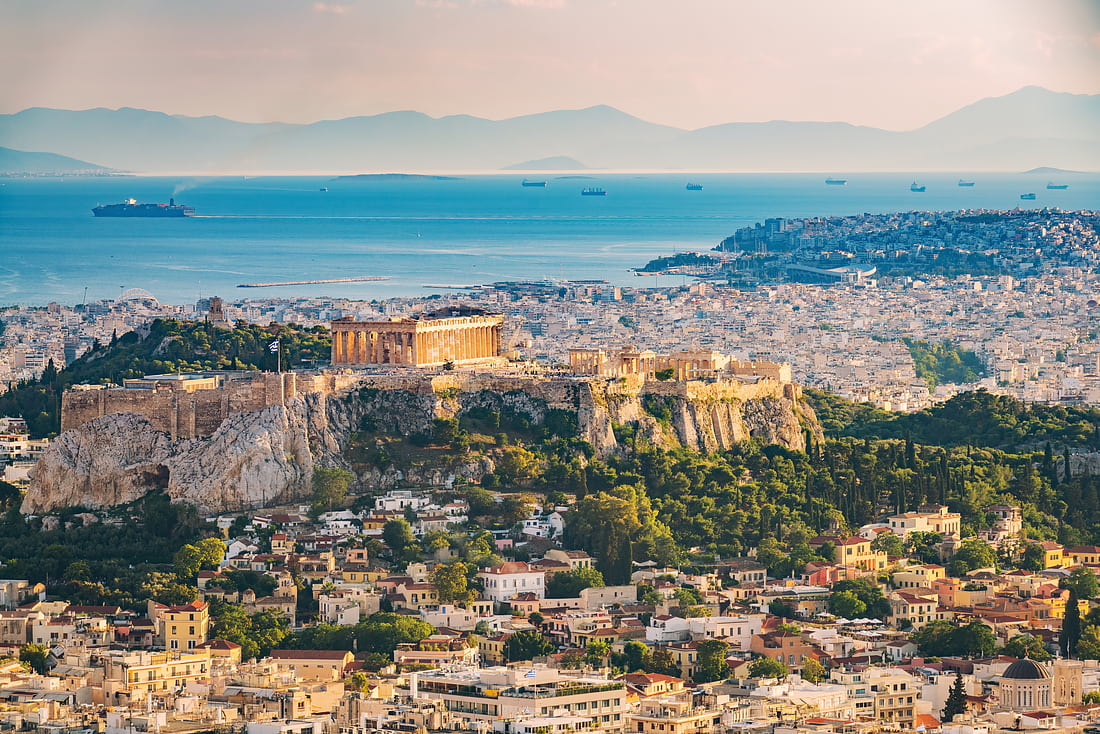
Athens is the capital of Greece and a city with a rich history. The city has been inhabited for nearly 3,000 years and is often considered the cradle of Western civilization and the birthplace of democracy.
One of Athens' top attractions is the Acropolis, a rocky hill in the heart of the city that is home to several ancient structures. The most famous of these is the Parthenon, a temple dedicated to the goddess Athena that dates back to the fifth century BC. The Parthenon is considered one of the most important examples of ancient Greek architecture and is a UNESCO World Heritage Site.
Another important site in Athens is the Ancient Agora, a market and meeting place that was the center of the city's political and social life. Several buildings are located there, such as the Stoa of Attalos, a restored ancient shopping arcade, and the Temple of Hephaestus, an ancient temple dedicated to the god of fire.
The Theater of Dionysus is another significant tourist attraction in Athens, believed to be the oldest theater in the world. The theater was dedicated to the god of wine and fertility, and also hosted performances of Greek tragedies and comedies.
Besides the ancient monuments, Athens is also a vibrant modern city, with a rich nightlife, an interesting culinary scene and plenty of cultural attractions. Visit the National Archaeological Museum, the Benaki Museum and the Museum of Cycladic Art, which houses collections of ancient Greek art and artifacts.
2. Santorini
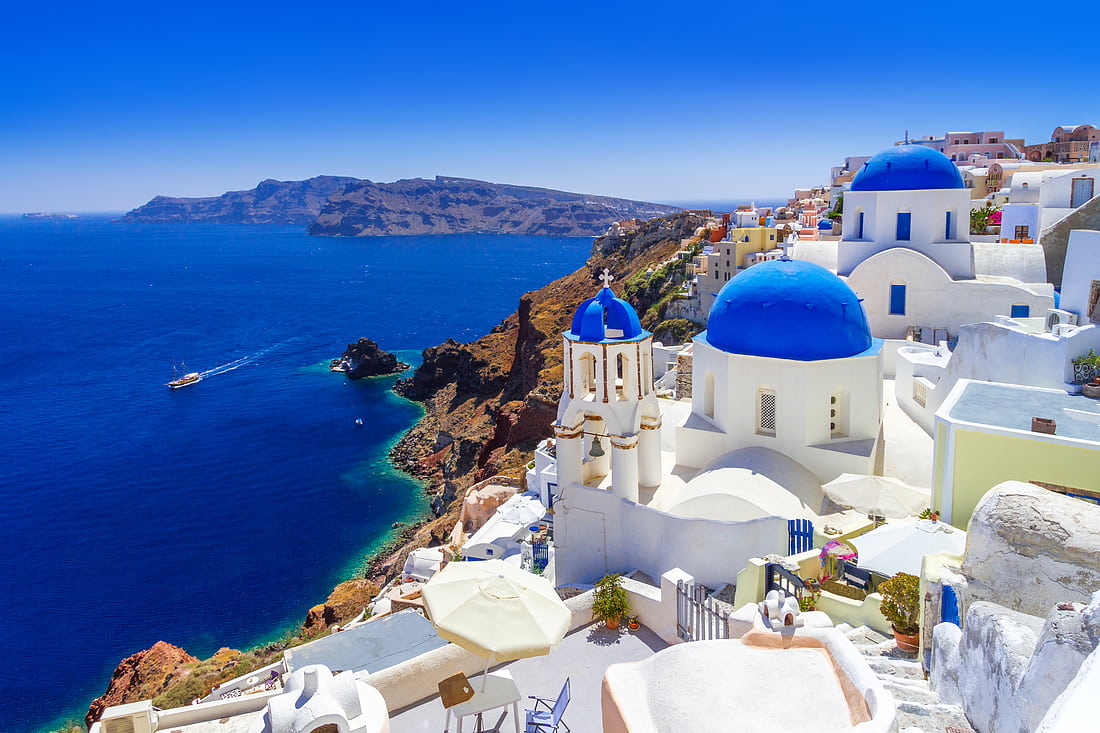
Santorini is undoubtedly one of Greece's most spectacular destinations. Located in the Aegean Sea, it is a volcanic island with a rugged landscape, black sandy beaches and stunning views of the caldera filled with deep blue sea.
The clifftop settlements of Fira and Oia on the west coast are Santorini's most distinctive sights. These traditional Cycladic whitewashed cubic houses seem to hang precariously over the edge of the caldera, offering visitors breathtaking views of the sea and surrounding islands. The best way to experience these clifftop settlements is on foot, wandering through narrow alleys and winding staircases that provide stunning panoramic views.
While the views are undoubtedly the highlight of Santorini, there are many other things to see and do on the island. Sunbathing and swimming on the black volcanic sand beaches on the southern and eastern coasts are popular activities, and Perissa and Kamari are two of the island's most famous towns.
Another must-see attraction on Santorini is the archaeological site of Akrotiri, an old Minoan village buried under lava after a volcanic eruption. The ruins of Akrotiri are a fascinating glimpse into Santorini's ancient past and the Minoan civilization that flourished here.
3. Delphi
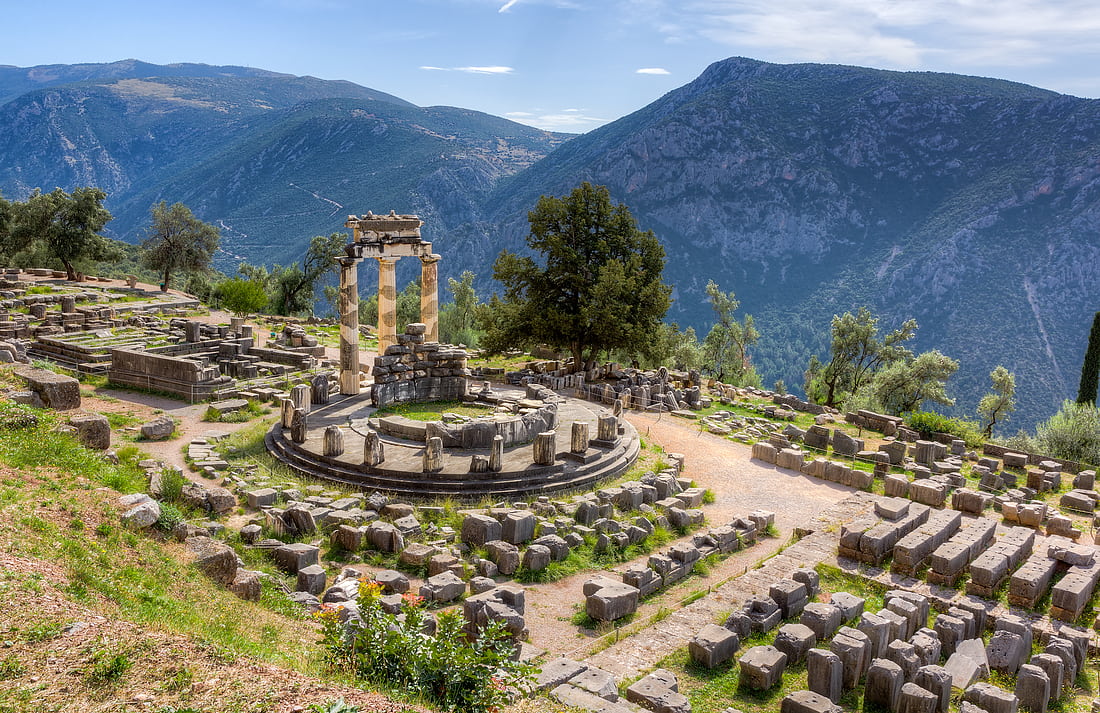
Delphi is a remarkable UNESCO World Heritage site located on the Greek mainland and is one of the most significant archaeological sites in the world. It is situated on the lower slopes of Mount Parnassus, overlooking a magnificent valley. The place was sacred to the ancient Greeks, who came here on pilgrimages to worship Apollo and seek wisdom from the fabled Oracle.
The ruins of Delphi include multiple temples, a theater, and a stadium dating from the 8th to the 2nd centuries BC. The most significant of these is the Temple of Apollo, which was the center of the Oracle's prophecies. It was believed that the Oracle of Delphi could provide insights into the future, and many important decisions in ancient Greece were made with the guidance of the Oracle.
The theater at Delphi is also a remarkable sight to see. It was built into the side of the mountain and could seat up to 5,000 people. It was used for music and theatrical performances, as well as political and religious gatherings.
The Delphi Archaeological Museum is also nearby, and it has a remarkable collection of discoveries from the site. The museum's collection includes sculptures, pottery, and other artifacts that offer a fascinating glimpse into the religious and cultural practices of ancient Greece.
4. Meteora - Greece's monasteries in the sky
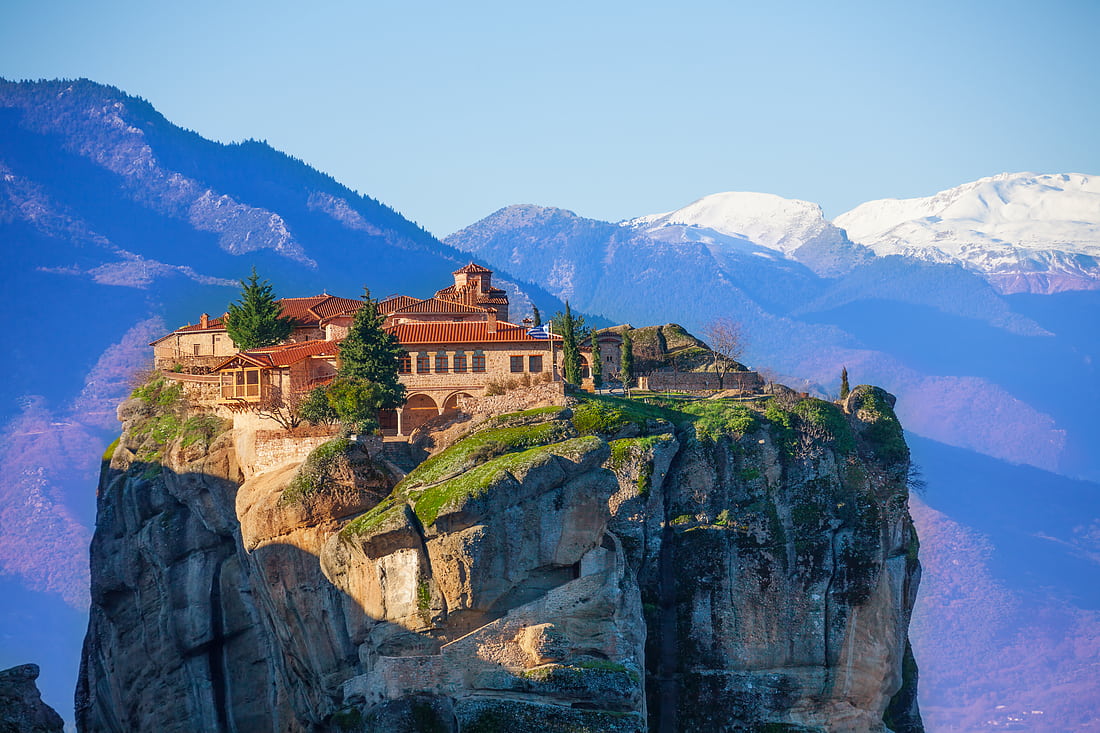
The Thessaly Plain is located in central Greece and is renowned for its unique landscape. The plain is surrounded by mountains and is dotted with unusual rock formations that rise up from the ground. These rocky outcrops are known as Metéora, which in Greek means "suspended in the air."
What makes Metéora even more remarkable is the centuries-old monasteries that sit atop these rocky pillars. These monasteries were built by monks who were seeking isolation and seclusion from the rest of the world. They constructed their homes on these inaccessible rocks to protect themselves from invaders and to focus on their religious studies.
Today, six of these monasteries are open to the public, and they have been recognized as a UNESCO World Heritage site. Each monastery is accessible only by climbing numerous flights of stone stairs that are chiseled into the cliffs.
Once inside the monasteries, visitors can see religious artifacts, ancient manuscripts, and stunning frescoes. The monasteries are still active, and visitors can witness the daily routines of the monks who live there.
5. Crete
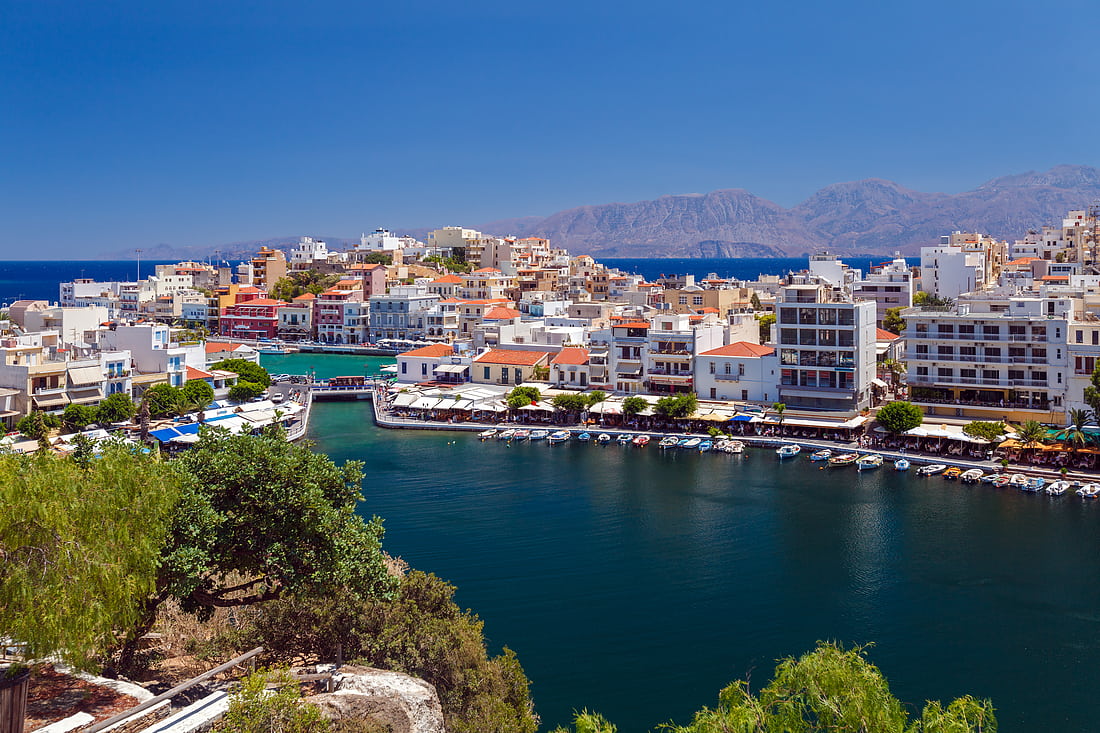
Crete is the largest of the Greek islands, located in the eastern Mediterranean Sea. This beautiful island is a land of contrasts, offering its visitors a variety of landscapes and experiences. It is characterized by steep coastlines, mountains, plains and lush olive groves.
Crete's coastline is particularly stunning, with crystal clear waters, pristine beaches and secluded coves. There are many opportunities for water sports such as swimming, snorkeling and scuba diving. Some of the most popular beaches on the island are Elafonisi, Balos and Falassarna, all of which offer stunning views and plenty of opportunities for relaxation.
Inland, Crete is dominated by the White Mountains, a range of rocky peaks that provide a stunning backdrop to the island's towns and villages. The mountains are home to traditional Cretan villages, where you can experience authentic culture and hospitality. Characteristic of these villages are outdoor cafes, a place for locals to meet and spend time in the sunshine.
Crete is also rich in history, and tourists can explore archaeological sites on the island to learn more about the various civilizations that have inhabited it over the years. The island was home to the Minoans, one of the most advanced ancient civilizations, so it's worth seeing the ruins of the palace at Knossos to learn more about their culture.
Besides the Minoans, Crete was also occupied by the Venetians, Ottomans and Byzantines, each of whom left their mark on the architecture and culture. There are many museums and galleries on the island where you can learn more about these different periods in Crete's history.
6. Peloponnese
Peloponnese is a historically and culturally significant region in Greece that encompasses a large peninsula connected to the mainland by the Rio-Antirrio bridge. It is located in the southernmost part of both Europe and Greece and has played a crucial role in shaping the country's history and culture.
The region's long and rich history is evident in its impressive array of ancient ruins and historical sites. Peloponnese is home to classical Greek temples, Venetian fortifications, Byzantine cathedrals, and Mycenaean palaces that reflect the many civilizations and events that have occurred in the area.
One of the most famous ancient ruins in Peloponnese is Olympia, which was the site of the first Olympic Games. The games were held in honor of Zeus, the king of the gods, and were an integral part of ancient Greek culture. Olympia is located on the western side of the peninsula, near the town of Pyrgos, and is easily accessible by car or public transportation.
Visitors to Olympia can visit the ruins of the ancient stadium, where athletes from all over Greece competed in various events, including running, wrestling and boxing. Also worth seeing is the temple of Zeus, which was one of the largest temples in Greece and housed a massive statue of the god.
7. Samaria Gorge
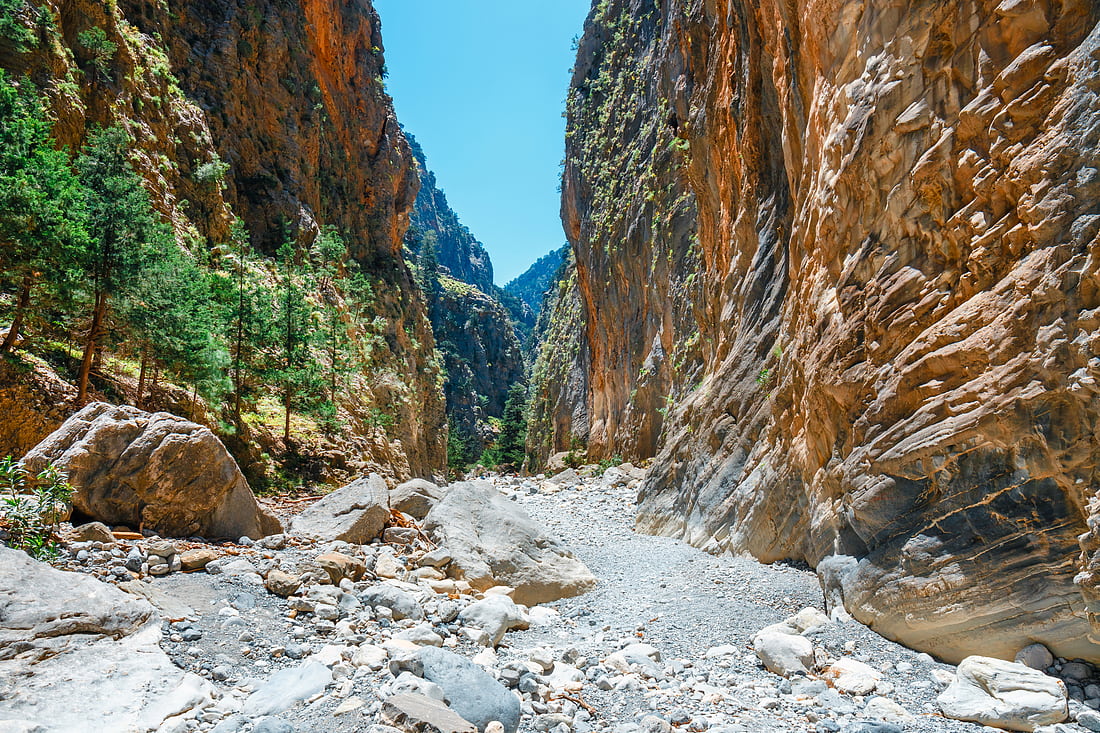
The Samaria Gorge is a natural wonder located on the Greek island of Crete and is a popular destination for nature lovers and hikers from all over the world. The gorge is known for its breathtaking scenery and challenging terrain, and is a must-see for anyone visiting the island.
Stretching 16 kilometers, the gorge is one of the longest gorges in Europe. It is located in the White Mountains National Park, and one of its most striking features is its narrow width, with some sections only 4 meters wide. This makes the hike an exciting and challenging experience.
It can take up to seven hours to traverse the entire length of the gorge, and you should be prepared for steep hills, rocky terrain and potentially difficult weather conditions.
8. Epidaurus
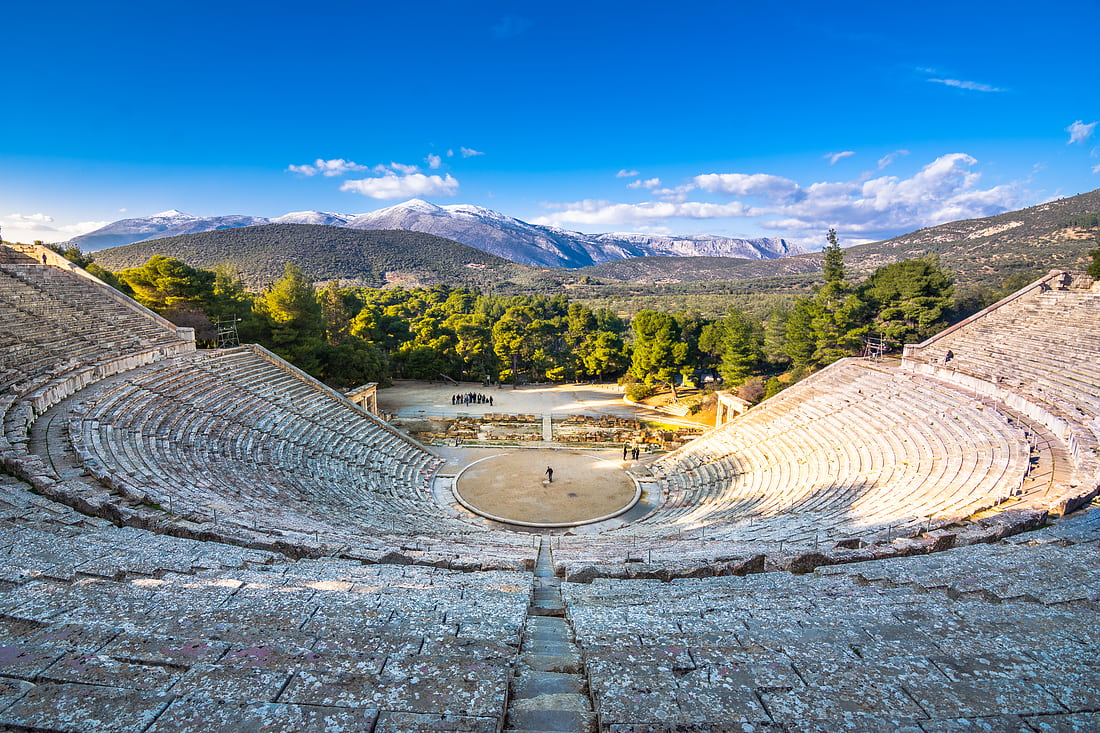
Epidaurus is an archaeological site located in the Peloponnese region of Greece. It has been listed as a UNESCO World Heritage Site due to its exceptional historical value.
Epidaurus' most famous attraction is its ancient theater, believed to have been built in the 4th century BC. The theater was designed to accommodate up to 14,000 people and is widely regarded as one of the best preserved ancient theaters in the world.
Besides the theater, the Epidaurus archaeological site also includes many other ancient structures. Also worth a visit are the remains of the Sanctuary of Asclepius, an ancient healing center dedicated to the Greek god of medicine.
9. Mykonos
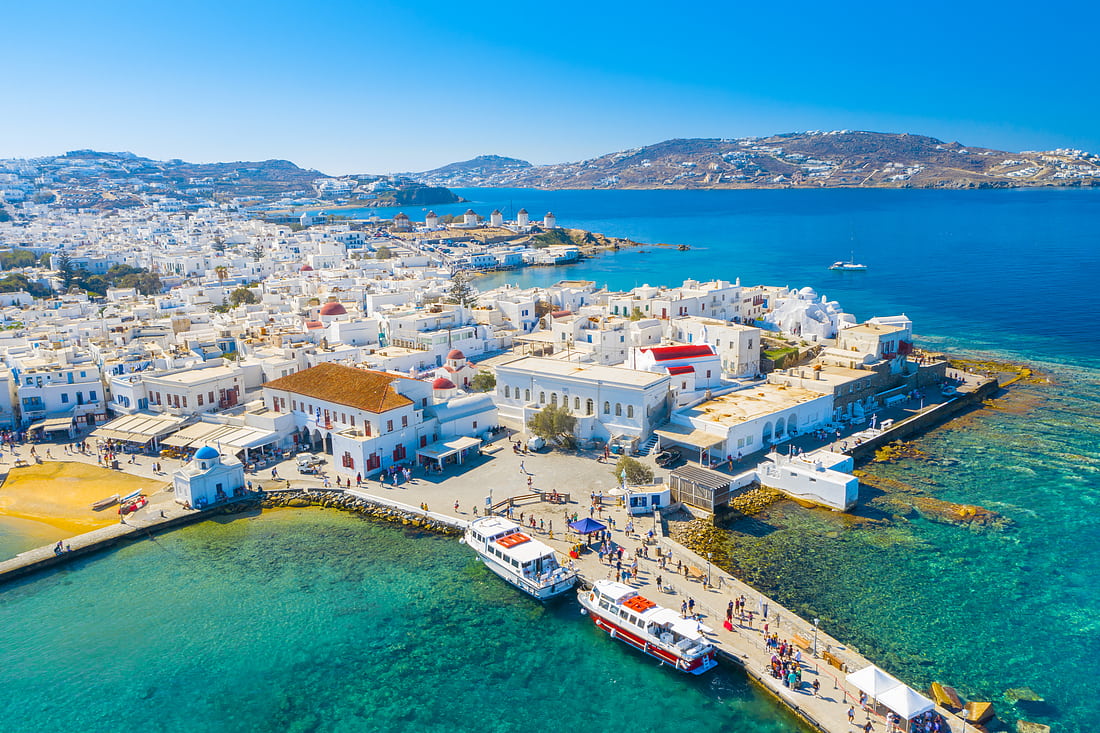
Mykonos is a beautiful and glamorous island in the Cyclades archipelago of Greece, which is often considered the country's most luxurious and exclusive vacation destination. The island is known for its stunning beaches, vibrant nightlife and elegant boutique hotels and restaurants.
One of the most popular attractions in Mykonos is its energetic and bustling capital, Mykonos Town. After dark, the town comes alive with live music venues, elegant cocktail bars and some of the best seafood restaurants in Greece. Tourists can wander the charming narrow streets and alleys, admiring the whitewashed houses and traditional architecture.
Another popular attraction on the island is Paraportiani, a beautiful and distinctive church located in Mykonos Town. This stunning white-walled church is one of the most photographed sights on the island and is a must-see for anyone traveling to Mykonos.
The southern shore of Mykonos is home to many beautiful sandy beaches, including the popular Paradise Beach, Super Paradise Beach and Psarou Beach. These beaches are known for their crystal clear waters, soft sand and lively bars and restaurants. Here you can swim, sunbathe, and engage in various water sports and other activities.
Mykonos is also a popular destination among international celebrities, who are often seen on the island during their vacations.
10. Thessaloniki
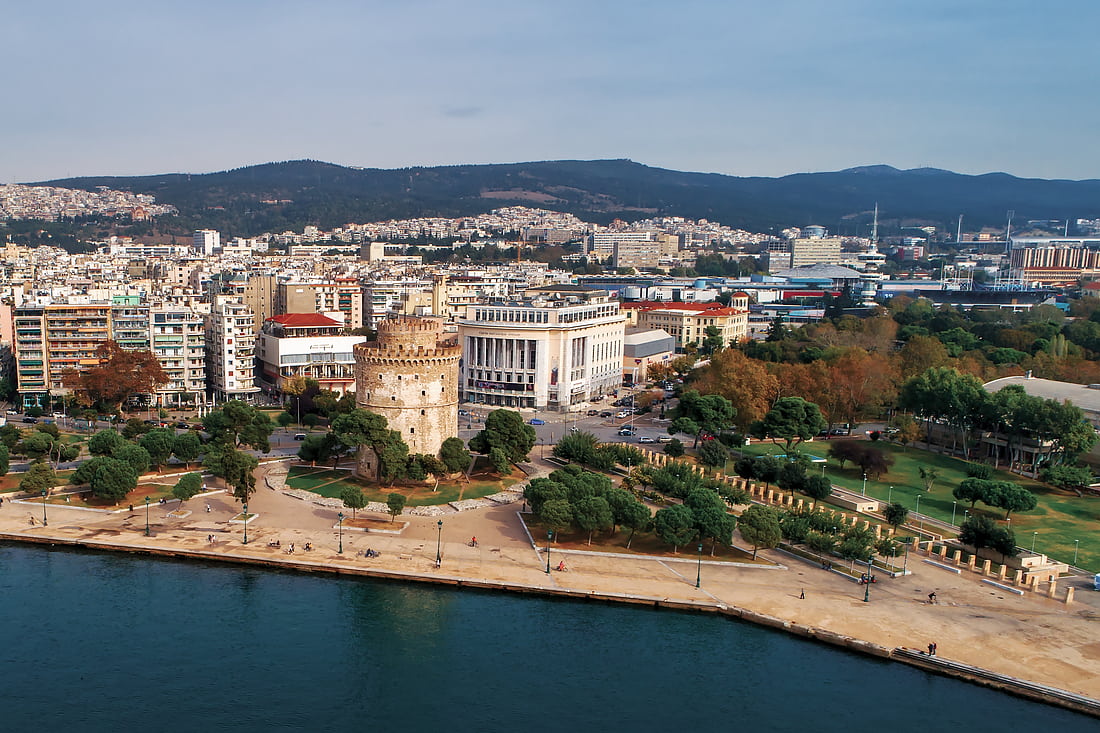
Thessaloniki is a vibrant and fascinating city located in the northern region of Greece. As the second largest city in the country after Athens, it is a cultural and economic center that attracts tourists from all over the world.
One of the main tourist attractions in Thessaloniki is its impressive collection of UNESCO-listed Byzantine churches. These historic churches are adorned with magnificent mosaics, frescoes and other elaborate works of art, allowing visitors to explore the rich cultural and religious history of the region.
Besides the Byzantine churches, Thessaloniki boasts many other monuments and attractions. One of the most notable is the Triumphal Arch of Galerius, an impressive Roman structure that dates back to the 4th century. Also worth a visit is the 15th-century White Tower, which offers panoramic views of the city and the surrounding area.
Another must-see attraction in Thessaloniki is the Byzantine Museum, which has a rich collection of Byzantine and post-Byzantine art and artifacts. The museum is housed in a beautiful neoclassical building and is considered one of the best museums of its kind in the world.
Along with its monuments and cultural attractions, Thessaloniki is also known for its rich street life. The city's narrow streets and alleys beckon visitors to visit the many cafes, restaurants and stores. The city is also home to a thriving art and music scene, with many festivals and cultural events taking place throughout the year.
*For a list of all the amazing places, as well as a map of the attractions Greece has to offer, follow this link Top-Rated Tourist Attractions in Greece
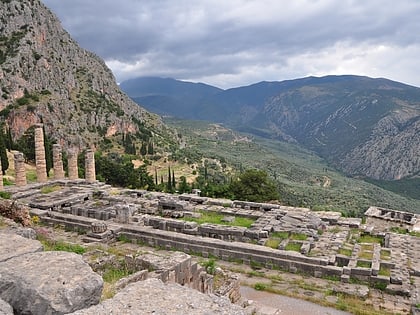


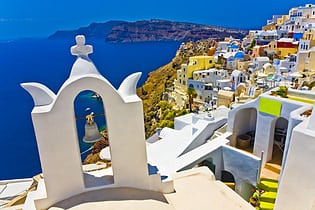
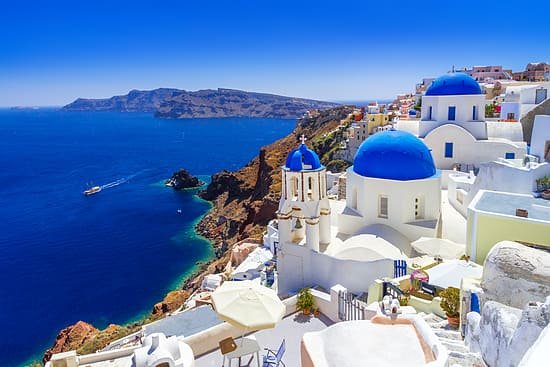




Comments